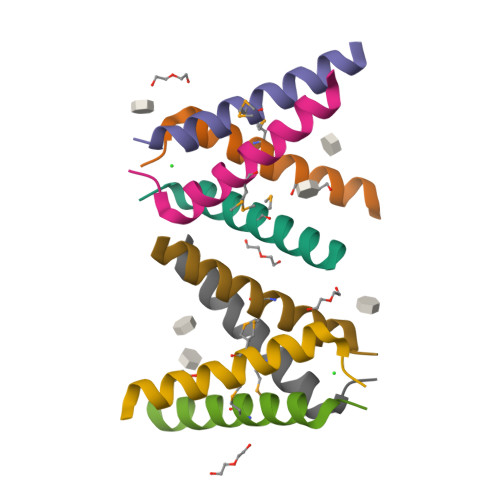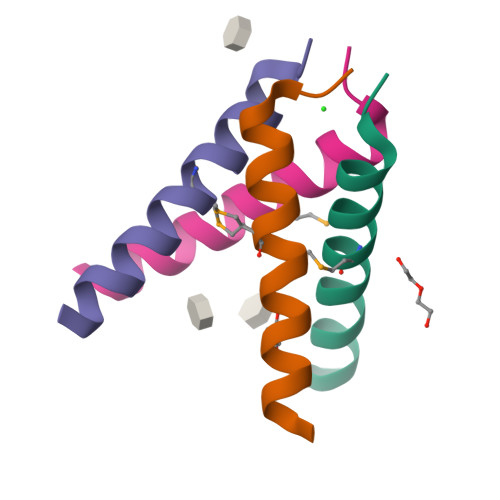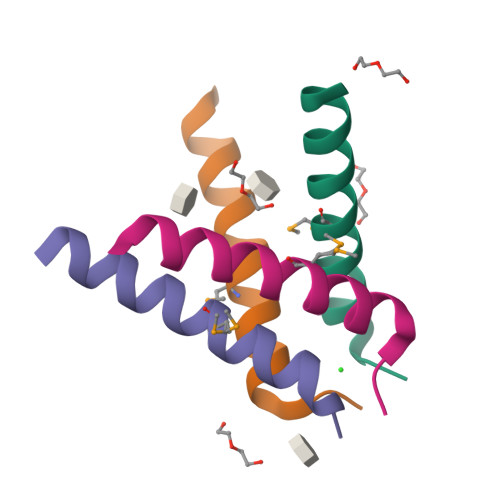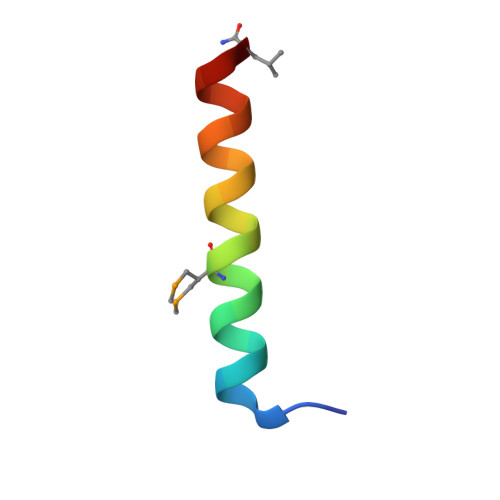Structural basis for the function and inhibition of an influenza virus proton channel
Stouffer, A.L., Acharya, R., Salom, D., Levine, A.S., Di Costanzo, L., Soto, C.S., Tereshko, V., Nanda, V., Stayrook, S., DeGrado, W.F.(2008) Nature 451: 596-599
- PubMed: 18235504
- DOI: https://doi.org/10.1038/nature06528
- Primary Citation of Related Structures:
3BKD, 3C9J - PubMed Abstract:
The M2 protein from influenza A virus is a pH-activated proton channel that mediates acidification of the interior of viral particles entrapped in endosomes. M2 is the target of the anti-influenza drugs amantadine and rimantadine; recently, resistance to these drugs in humans, birds and pigs has reached more than 90% (ref. 1). Here we describe the crystal structure of the transmembrane-spanning region of the homotetrameric protein in the presence and absence of the channel-blocking drug amantadine. pH-dependent structural changes occur near a set of conserved His and Trp residues that are involved in proton gating. The drug-binding site is lined by residues that are mutated in amantadine-resistant viruses. Binding of amantadine physically occludes the pore, and might also perturb the pK(a) of the critical His residue. The structure provides a starting point for solving the problem of resistance to M2-channel blockers.
Organizational Affiliation:
Department of Biochemistry and Biophysics, School of Medicine, University of Pennsylvania, Philadelphia, Pennsylvania 19104, USA.





















